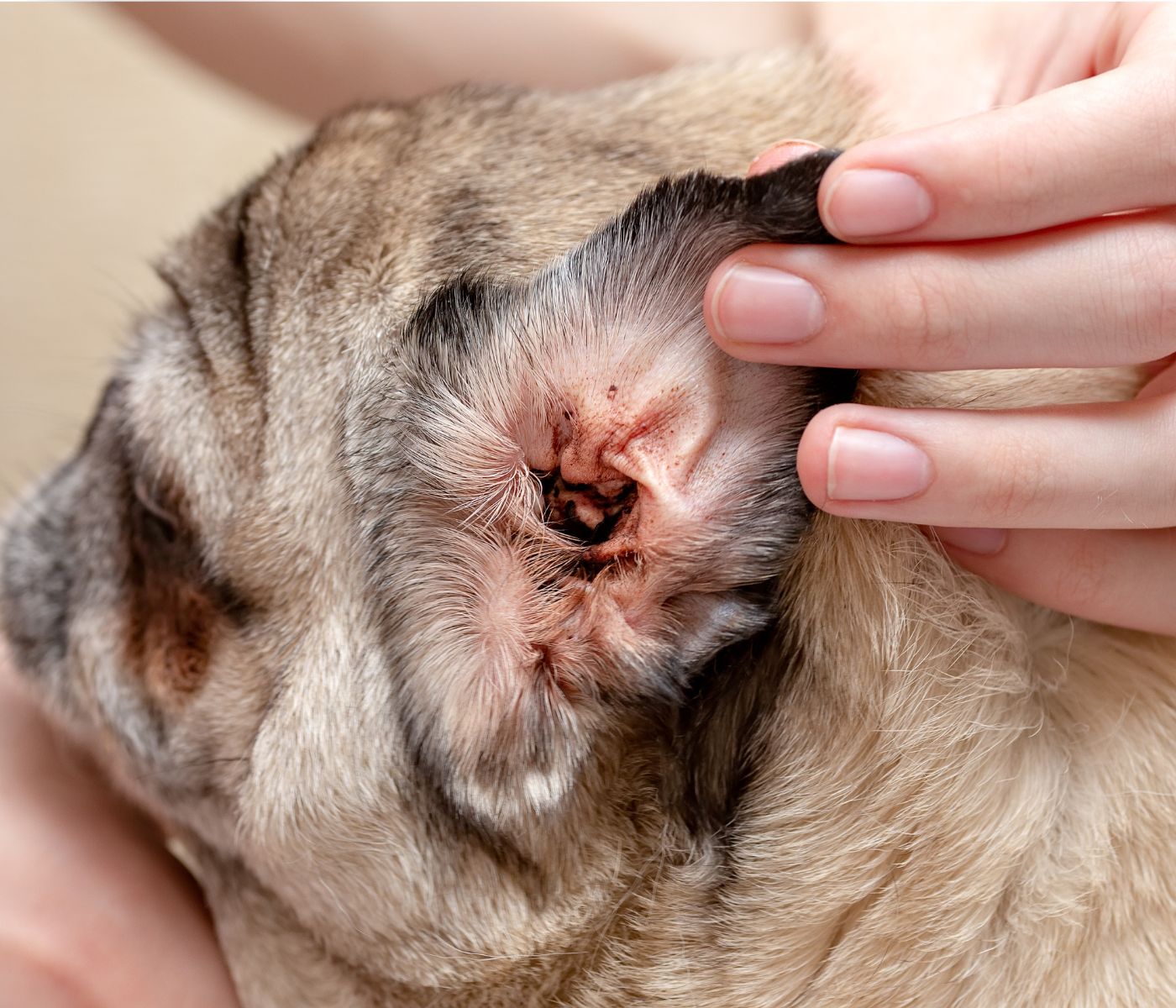Introduction
How much does it cost to crop a dog’s ears? This is a question that many dog owners face when they are considering this procedure for their pet.
There are several factors to consider when determining the cost of ear cropping, including vet bills, tools and products, and time commitment.
In addition, there are pros and cons to cropping dogs’ ears that should be considered before making a decision. Finally, there are alternatives to ear cropping that may be more suitable for some dogs and their owners.
Costs of Cropping Dogs’ Ears

Vet bills
The cost of cropping a dog’s ears can range from $150 to $650, depending on the size and breed of the dog, as well as the location. The vet will also charge for the anesthesia, which is typically around $50.
The cost of supplies needed to crop a dog’s ears at home
The cost of supplies needed to crop a dog’s ears at home is between $40 and $80. This includes items such as clippers, scissors, styptic powder, and gauze pads.
It is important to note that cropping a dog’s ears at home is not recommended unless you have experience doing so. Otherwise, it is best to leave it to the professionals.
Time Commitment
Finally, there is the time commitment involved in cropping a dog’s ears. The procedure itself takes around 30 minutes to an hour. However, you will need to take your dog back for several follow-up appointments over the next few weeks in order to have their stitches removed and their ears re-bandaged.
This can be a considerable time investment, particularly if you live far from your vet’s office.
The Cost of Ear Cropping Surgery

The prices charged by veterinarians
Veterinarians typically charge between $150 and $650 to crop a dog’s ears. The actual cost will depend on the vet’s experience, the dog’s size and age, the type of cropping procedure used, and whether or not the dog needs sedation or anesthesia.
The cost of anesthesia
Anesthesia is typically required for ear cropping surgery, and this can add an additional $50 to $100 to the total cost.
The cost of post-operative care
After the surgery, your dog will need to wear a protective head collar to prevent him from scratching or rubbing his ears.
You’ll also need to clean the surgical site daily and apply ointment as directed by your veterinarian. These supplies can cost between $50 and $100.
The Benefits of Ear Cropping
- The main benefit of ear cropping is that it can help to reduce the risk of ear infections. Ear infections are relatively common in dogs, and they can be both painful and dangerous.
By removing the floppy part of the ear, which is where most infections occur, you can help to prevent your dog from getting them.
- Another benefit of ear cropping is that it can make your dog look more alert and attentive. This is because when a dog’s ears are flopped over, they tend to obscure their vision somewhat.
By cropped ears, your dog will be able to see better, which can make them seem more vigilant.
- Finally, some people simply prefer the look of cropped ears on a dog. To them, it gives the dog a more regal and powerful appearance. While this is purely subjective, there’s no denying that many people find cropped ears aesthetically pleasing.
The Risks of Ear Cropping
While there are some benefits to ear cropping, there are also some risks that should be considered before making the decision to do it.
- The most significant risk is that of infection. Any time you create an open wound on your dog’s body, there is a risk of infection setting in. This risk is increased if the surgery is not performed by a qualified professional or if proper aftercare is not followed.
- There is also a risk that your dog may experience pain and discomfort both during and after the surgery. Ear cropping is a fairly invasive procedure, and even with anesthesia there may be some discomfort involved.
- Additionally, your dog may need to wear special headgear or stitches for a period of time after the surgery (which can also be uncomfortable). As with any surgical procedure, there is always a small risk of complications arising during or after surgery. These risks should all be discussed with your veterinarian before deciding whether or not to crop your dog’s ears.
The Ethical Considerations of Ear Cropping
In addition to the physical risks involved with ear cropping, there are also some ethical considerations that should be taken into account before making the decision to do it.
Some people believe that ear cropping is cruel and unnecessary cosmetic procedure . Others argue that as long as the “surgery is performed by a qualified professional and proper care is taken afterwards , there is no reason why it couldn’t be considered ethically acceptable .”
Ultimately , whether or not you choose to have your dog’s ears cropped is a personal decision . There are pros and cons to both options , and only you can decide what you feel comfortable with .
If you do decide to go ahead with it , make sure you do plenty of research so that you understand all of the risks involved , and be sure to choose a reputable professional to perform the surgery.
What are the Different Styles of cropping Dog’s Ears?
Show Crop
The show crop is the more extreme of the two most common types of ear crops.
In a show crop, the dog’s ears are cropped much shorter than in a pet crop. This type of crop is often seen in dogs that are shown in conformation events.
The main purpose of cropping is to create a certain look that is desired by the owner or breeder.
Show crops can vary in length, depending on the preference of the owner or breeder. Some show crops may leave only a small amount of ear flap remaining, while others may leave half of the original ear flap intact.
Military/ Pet Crop
The pet crop is the less drastic of the two most common types of ear crops. In a pet crop, the dog’s ears are still cropped, but not as short as in a show crop.
This type of crop is often seen in pet dogs that are not shown in conformation events. The main purpose of cropping is to improve the appearance of the dog and to make him look more stylish or fashionable.
Pet crops can vary in length, depending on the preference of the owner. Some pet owners may prefer their dog’s ears to be cropped shorter than others.
Variations on Ear Crops
There are also a number of variations on the two basic types of ear crops. These variations can be seen in both show dogs and pet dogs. Some of the more common variations include the following:
Button Crop
The button crop is a variation of the show crop. In a button crop, the dog’s ear is cropped very short, leaving only a small round button of cartilage at the top. This type of crop is often seen in toy breeds such as Yorkshire Terriers and Maltese.
Puppy Cut
The puppy cut is a variation of the pet crop. In a puppy cut, the dog’s ears are cropped shorter than in a traditional pet crop. This type of crop is often seen in young dogs that have not yet reached their full adult size.
Puppy cuts can vary in length, depending on the preference of the owner. Some puppy cuts may leave only a small amount of ear flap remaining, while others may leave half of the original ear flap intact.
Working Crop
The working crop is a variation of the show crop. In a working crop, the dog’s ear is cropped slightly longer than in a traditional show crop. This type of crop is often seen in working dogs such as police dogs and military dogs.
The extra length provides more protection for the dog’s ears when he is working in rough or brushy conditions.
Alternatives to Cropping Dogs’ Ears
Ear Taping
Ear taping is a popular alternative to cropping for a few reasons.
- First, it’s significantly less expensive than cropping.
- Second, it’s much less invasive and doesn’t require any anesthesia or surgery.
- Third, it’s not permanent, so if you decide later that you don’t like the look of your dog’s taped ears, you can simply remove the tape and let the ears return to their natural state.
There are a few things to keep in mind if you’re considering ear taping for your dog.
- First, it’s important to use the right type of tape. There are many different types of tape on the market, but not all of them are suitable for use on dogs’ ears. You’ll need to find a tape that is specifically designed for dogs’ ears, as this will ensure that it won’t cause any irritation or discomfort.
- Second, you’ll need to be careful when applying the tape. It’s important to avoid putting too much pressure on the ears, as this could cause pain or comfort issues.
- Third, you’ll need to reapply the tape every few days, as it will eventually lose its adherence and fall off.
Ear Shaping
Ear shaping is another popular alternative to cropping cats’ ears. It’s a less invasive option that doesn’t require any anesthesia or surgery, and it’s also less expensive than cropping.
The downside is that it’s not permanent – if you decide later that you don’t like the look of your cat’s shaped ears, they will gradually return to their natural state over time.
There are a few things to keep in mind if you’re considering ear shaping for your cat.
- First, it’s important to find a reputable ear shaper who has experience working with cats’ ears.
- Second, you’ll need to be prepared for your cat to have some discomfort during and immediately after the procedure – most cats recover quickly though and are back to their normal selves within a day or two.
- Third, ear shaping isn’t always successful – sometimes the desired results aren’t achieved, and in rare cases complications can occur (although this is very uncommon).
FAQs
Q: Does cropping a dog eats hurts?
A: No, the process is relatively painless for the dog. However, they will need to be put under anesthesia, which carries its own risks.
Q: Can I crop my dog’s ears myself?
A: It is not recommended that you attempt to crop your dog’s ears yourself. The process requires special equipment and training, and it is best left to professionals.
Q: How much does it cost to get a pits ears clipped?
A:The cost of ear cropping surgery will vary depending on the veterinarian you use and the region you live in. Generally speaking, the surgery will cost between $100 and $500.
Q: What age should you crop a dog’s ears?
A: Professionals typically recommend that dogs be between 6 and 8 weeks old when their ears are cropped. This is because younger puppies heal more quickly from the surgery.
Q: How long do cropped ears take to heal?
A:[ It takes approximately 6-8 weeks for cropped ears to heal completely. During this time, it is important to keep the area clean and dry to prevent infection.]
Conclusion
Cropping your dog’s ear depends on a number of factors, including vet bills, the cost of tools and products, and the time commitment involved.
There are also pros and cons to cropping dogs’ ears that should be considered before making a decision. Alternatives to cropping dogs’ ears include ear taping and ear shaping.
Ultimately, the decision of whether or not to crop a dog’s ears is a personal one.
If you are considering cropping your dog’s ears, be sure to do your research and talk to your veterinarian to make sure it’s the right decision for you and your pet.




